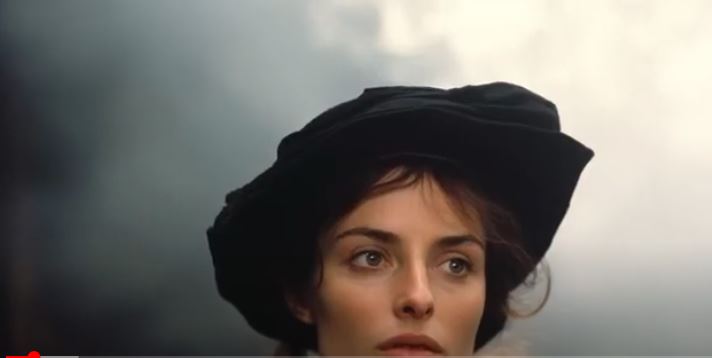The name “Saint Pierre” holds a unique place in intellectual, cultural, and athletic history. Often misunderstood as a single identity, it actually encompasses three extraordinary figures who span centuries and continents.
In this editorial, we explore the intertwined legacies of Charles-Irénée Castel, abbé de Saint-Pierre, the Enlightenment reformer; Jacques-Henri Bernardin de Saint-Pierre, the poetic botanist and novelist; and Georges St-Pierre, the modern Canadian mixed martial arts icon. Each represents a different vision of greatness: peace, imagination, and discipline. All three are united by their lasting impact on human thought and action.
Their biographical highlights, including their early life, education background, career journey, religion and beliefs, rise to fame, real name, ethnicity or nationality, net worth, and public image, reflect not just the times they lived in but how they rose above them.
Saint Pierre Biography, Early Life, Education Background, Career Journey
| Full Name | Born – Died | Profession | Known For |
|---|---|---|---|
| Charles-Irénée Castel, abbé de Saint-Pierre | 1658 to 1743 | Cleric, political theorist | International peace plan, Enlightenment reform |
| Jacques-Henri Bernardin de Saint-Pierre | 1737 to 1814 | Writer, botanist | Author of Paul et Virginie, natural philosophy |
| Georges St-Pierre (GSP) | May 19, 1981 | MMA fighter, actor | UFC welterweight and middleweight champion |
| Reference | Wikipedia |
Early Life, Parents and Siblings, and Education Background
Charles-Irénée Castel was born into minor nobility in Normandy. Raised in a devout Catholic household, he entered Jesuit school and later took holy orders. His parents recognized early his affinity for language and logic. The structure of clerical life gave him the platform to begin crafting political philosophies.
Jacques-Henri Bernardin de Saint-Pierre was born in Le Havre to a family of craftsmen. His father, a shipbuilder, encouraged science and engineering. The early death of his mother led him to develop a reflective, almost melancholic temperament, which shaped his lifelong attachment to nature and emotional sincerity. His formal education included mathematics and botany, but his worldview was shaped more by travel than textbooks.
Georges St-Pierre was born in Saint-Isidore, Quebec. The son of working-class parents, he grew up in modest conditions. His father was a roofer, and his mother worked at a local school. Bullied at a young age, Georges turned to Kyokushin karate, which became both a defensive tool and a personal discipline. As he grew older, he pursued Brazilian jiu-jitsu, wrestling, and boxing, attending Cegep Édouard-Montpetit while training in mixed martial arts.
Religion and Beliefs, Real Name, Ethnicity or Nationality
Charles-Irénée’s clerical status anchored him in Catholic doctrine, but his true religion was reason. He believed divine law could be reflected in civic law and peace treaties. His vision of ethics transcended theology.
Jacques-Henri was culturally Catholic but spiritually pantheistic. He found the divine in nature, in Rousseau’s ideals, and in the unspoiled human spirit. His works reject orthodoxy and instead portray religion as a personal moral compass.
Georges St-Pierre has openly discussed his belief in science, evolution, and discipline rather than organized religion. He embraces philosophy from the East, especially Stoicism and Zen. His identity as a French-Canadian often places him as a cultural ambassador, proud of his roots but cosmopolitan in reach.
Rise to Fame and Career Journey

In 1713, Charles-Irénée released Projet pour rendre la paix perpétuelle en Europe, a plan for a pan-European congress to resolve disputes. At a time when war was often glorified, this idea was revolutionary. He became an early advocate for supranational governance, foreshadowing the League of Nations and the United Nations. His career, though controversial, led to the founding of one of Europe’s first think tanks: the Club de l’Entresol.
Jacques-Henri began publishing in the late 18th century, culminating in Paul et Virginie, a sentimental novel that became an instant classic. Blending emotional storytelling with exotic geography, it captured France’s imagination on the eve of revolution. Later appointed director of the Jardin des Plantes, he fused science and literature in a way few have since matched.
Georges St-Pierre began his professional MMA career in 2002. By 2006, he had claimed the UFC welterweight title. His mixture of karate precision, wrestling control, and psychological composure made him dominant across divisions. He retired undefeated as middleweight champion in 2017. Beyond fighting, GSP became an actor, author, and health advocate, expanding his career into media and entrepreneurship.
News, Gossip, Scandals, and Breakup
Charles-Irénée found himself at odds with Louis XIV’s war policies. When he publicly critiqued the king, he was expelled from the Académie française. This scandal gave him notoriety as well as historical credibility. His ideas remained dormant for centuries but were later hailed as prophetic.
Jacques-Henri avoided the scandal sheets but clashed with Enlightenment rationalists. His emotive prose was mocked by some peers. He never married and lived modestly, giving rise to gossip about his reclusive habits and suspected melancholia.
Georges St-Pierre’s public life has remained largely scandal-free. Though tabloids speculated on romantic relationships, financial contracts, and even medical retirements, none stuck. His relationship with the UFC itself was tested when he stepped away citing dissatisfaction with drug testing policies. The so-called breakup with UFC was brief and ended in triumph.
Net Worth, Lifestyle, Homes, and Fashion
Charles-Irénée lived modestly despite aristocratic privilege. He invested his earnings in publications and political salons. His home served as a gathering space for early intellectuals, rather than a fortress of luxury.
Jacques-Henri preferred rustic life. In later years, he settled in Éragny, where he maintained a botanical garden and penned essays on the harmony of man and nature. His fashion was simple, sometimes monk-like, reflecting his distaste for extravagance.
Georges St-Pierre lives a disciplined but comfortable life. With an estimated net worth of 30 million dollars, his earnings come from UFC pay-per-view shares, endorsements, acting roles, and business ventures. He owns property in Canada and Los Angeles. He dresses for function, not flamboyance, often seen in fitted athletic wear, sharp blazers, or training gear.
Relationships, Spouse or Partner, Children, Divorce
There is no public record of Charles-Irénée having a romantic partner or children. His life was devoted to theory, not intimacy.
Jacques-Henri remained unmarried, though his letters and writings show deep emotional bonds with close friends and family. His personal life, while quiet, was filled with reflective connections rather than formal relationships.
Georges St-Pierre keeps his personal life away from public scrutiny. No confirmed spouse or long-term partner has ever been disclosed. He has stated that he prefers to focus on health, family, and professional integrity, avoiding unnecessary distractions.
Plastic Surgery, Age and Birthday, and Health
At the time of his death in 1743, Charles-Irénée was 85 years old, an exceptional age for the time. His longevity was attributed to a disciplined lifestyle and mental engagement.
Jacques-Henri died at 77 in 1814, reportedly healthy until the final year of his life. His walking and gardening routines were consistent until late age.
Georges St-Pierre, born May 19, 1981, remains a symbol of peak human conditioning. Now in his mid-forties, he continues to train rigorously. While some speculate he may have undergone subtle procedures common in media professions, he has never confirmed cosmetic enhancements.
Ethnicity or Nationality, Fashion, and Cultural Identity
All three men carried French cultural DNA, though their expressions of it differed. Charles-Irénée’s patriotism was embedded in reform. Jacques-Henri’s in nature. Georges’s in humility and precision.
In terms of fashion, Charles-Irénée wore clerical robes and court dress. Jacques-Henri embraced simple linen and often donned natural tones. Georges’s modern aesthetic blends functionality with clean, athletic branding. No loud logos. No excess. Just purpose.
Final Thoughts: Why the Saint Pierre Legacy Matters
The name Saint Pierre represents more than history. It represents vision across disciplines. Whether proposing perpetual peace, writing an island love story, or fighting in front of millions, these men defined eras by breaking molds.
They were thinkers and doers. They lived lives that were controversial, inspiring, and most importantly authentic. Their biographies reflect how vastly different individuals can share a name and yet change the world in ways no algorithm could predict.
In a world of fleeting fame, the Saint Pierres stand out not because they courted attention, but because they earned impact. That is the kind of legacy that lives beyond headlines.
